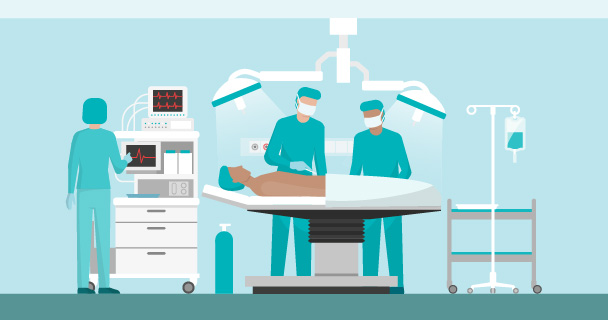blog


The transition away from inpatient care is having a tremendous impact on the healthcare industry—changing everything from how we are structuring our healthcare systems to how we are using metrics to gauge success. This move to outpatient dominance requires that leaders adopt a new mindset when thinking about how healthcare is delivered. Following are several trends that may help advance your thinking and inform decision-making in your organization.
Payers are pushing for lower costs
The cost of healthcare in the U.S. continues to rise. In 2016, national healthcare expenditures were a whopping 18% of our gross domestic product (GDP), and this percentage is expected to increase to almost 20% by 2025, with surgery costs representing a substantial portion of this amount (Mundy). It is estimated that the cost of a surgery performed in an outpatient environment is about 60% of the cost for the same surgery performed in an inpatient setting. CMS estimates that if even half of the eligible surgeries took place in an ambulatory surgery center (ASC) instead of an inpatient setting, it would save Medicare $2.4 billion per year (Mundy).
Technical advances allow more care to be delivered in a patient-friendly outpatient setting
Advances in technology have led to a dramatic increase in outpatient-eligible procedures. In 1982, Medicare reimbursed only about 200 procedures in an ambulatory setting; by 2016, more than 3,400 procedures were approved (Mundy). Some of these advances include: (Mundy)
At the same time, ambulatory surgery centers (ASCs) have been shown to provide: (Mundy)
The transfer of care from the inpatient to the outpatient setting may be only the tip of the iceberg. New advances in telehealth increasingly allow for patients to be cared for in their own homes. It is increasingly recognized that patients recover better in their home environment, where conditions are less hazardous for patients and contain lower infection risks (Burmahl).
Outpatient volumes are on the rise
Sg2 projects a 2% decline in inpatient discharges over the next 10 years while they forecast 15% growth in outpatient volumes (McDowell). They are also predicting that the downward impact on inpatient utilization will soon plateau, as the complexity of care continues to increase and the growing elderly population pushes the limits in the ability to shift care to the outpatient setting (McDowell).
An analysis of claims data from approximately 43 million Blue Cross Blue Shield (BCBS) members was released in 2016 as The Health of America Report. In this study, BCBS shows that the future increase in outpatient volume will vary considerably by procedure. For example, gall bladder removal has already made the shift to a predominately outpatient procedure, with more than 80% of these procedures now performed in an ambulatory setting, and the outpatient percentage for this procedure is forecast to remain essentially flat (BCBS). In contrast, the percentage of hysterectomies performed in ambulatory settings is projected to have a dramatic increase from 36% to 64% (BCBS).
References
Beth Burmahl, “Health facilities professionals break beyond traditional walls,” HFM Magazine, Dec. 7, 2016, http://www.hfmmagazine.com/articles/2555.
Blue Cross Blue Shield, “Shopping for Surgery: How Consumers Are Saving with the Shift to Outpatient Care,” Feb. 2016, https://www.bcbs.com/the-health-of-america/reports/how-consumers-are-saving-shift-outpatient-care
Madeleine McDowell, “Sg2 2017 Impact of Change Forecast: Finding Growth,” May 5, 2017, https://www.sg2.com/health-care-intelligenceblog/2017/05/sg2-2017-impact-change-forecast-finding-growth/
Robert Mundy, “Healthcare Outlook 2017: Ambulatory Surgery Centers,” Ankura Consulting, 2016, https://ankura.com/insights/healthcare-outlook-2017-ambulatory-surgery-centers/
HealthStream’s learning management system and healthcare training solutions support medical training initiatives and allow for the best patient care.
View All Learning & PerformanceExpand the decision-making skills and effectiveness of your healthcare workforce with HealthStream's workforce development programs and services.
View All Clinical DevelopmentComprehensive, industry-leading provider onboarding and credentialing software that validates health outcomes and supports provider assessment.
View All CredentialingMake sure your healthcare staff can schedule out appointments and work schedules with ease using our line of nurse scheduling software solutions.
View All SchedulingWhen you enact HealthStream's quality compliance solutions, you can do so with the confidence your healthcare organization will meet all standards of care.
View All Quality & ComplianceUtilize patient access solutions and advanced reimbursement solutions to manage clinical denials and improve your organization’s reimbursement strategy.
View All ReimbursementLearn about our advanced resuscitation training solutions. Our solutions are designed to help improve patient outcomes.
View All Resuscitation